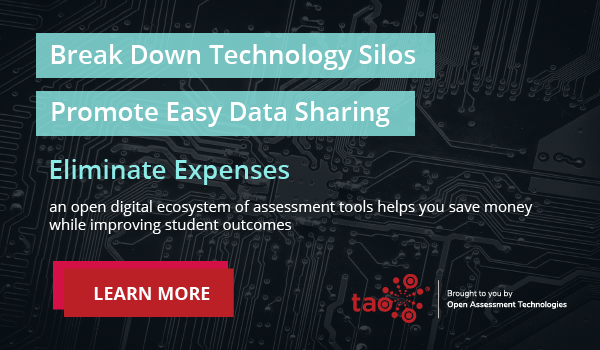What are students looking for from education and classroom technology? With the past year shaking up the world of education, it’s not surprising to learn more and more students are seeking the best in technological solutions to support their learning journey. After all, by now, most students are well versed in how tech can go hand in hand with their success in education- and they quickly lose interest in slow or complicated EdTech.
Let’s look at how some classroom EdTech products may be falling short for students, and what institutions need to consider when choosing new eLearning software for students.
EdTech Challenges for students
While students have been relatively quick to adapt to new classroom technology introduced by hybrid and remote learning, that’s not to say there aren’t still challenges they face. Some of the most common we hear include:
- Products without the know-how
As with any market that’s rapidly gaining momentum, lots of businesses claim they know the educational system; however, the truth is it’s challenging to keep up with so many different needs of both teachers and students. - Lack of efficient training
It’s great to provide students with a shiny new tool for learning, but no good if the staff nor students know how to use it. The teaching staff must know how to make the most out of any new tool and pass it on to their students. Many students feel a lack of clarity on new classroom EdTech can hinder their learning potential - Tech infrastructure
Today’s learners have grown up in an environment driven by technology, but not everyone has the same opportunities to interact with the tools at home. If students are all handed a new laptop and tablet, but there’s limited WIFI to cope can again culminate in a frustrating learning experience. A robust network infrastructure requires efficient WIFI wherever the student will be accessing the tool. Accessibility is key, as well as flexibility and usability of devices across applications. - Inclusivity
Is the device or product fully encompassing to all students? Including those with dyslexia or additional learning requirements? Is the software racially biased or not inclusive of a specific community? What about visual, hearing impairments or language barriers? Keep discrimination out of your learning environment. - Student Privacy
Protecting their privacy is a common concern amongst student and parents alike, and not in regard to learning data. For example, some live remote proctoring solutions have raised concern over student privacy at home.
The Way Forward
Understanding where weaknesses impact students is fundamental to ensuring a successful EdTech future, but what do students expect? Simply put, students expect utmost sophistication, especially when it comes to online assessment.
So what tools can help students to succeed and stay engaged?
The answer here is keeping in touch with students needs and the ever-changing market. Areas to explore include AI and formative assessment with technology enhanced performance-based tasks. Considerations must also be given to how staff remain in touch with their learners, such as potential chat functions or online drop in sessions.
Accessibility for all
Overlooking accessibility when rolling out classroom technology for students is simply not an option, especially as many of today’s students express that they would rather “go without” than “stand out” in terms of having to go out of their way to seek accessibility support.
Accessibility and accommodation tools embedded into technology solutions can ensure digital classrooms are available to all learners, including those who speak different languages or who may have visual or hearing impairment. For example, accessible EdTech solutions that adopt a Universal Design approach and follow WCAG 2.1 AA standards, offering tools like:
- Text-to-speech tools
- Captions
- Highlighters
- Color-contrast
- Choice strikers
- Answer masking
- Calculators
Individualized learning
Tailoring the learning needs of every student in a class has long been a goal of teachers; educators know that personalization in education leads to better student engagement and thus more authentic learning. While personalization has long been a challenge in traditional classroom settings due to time and resource constraints, advances in Artificial Intelligence are making it easier to introduce personalized learning tools for students.
Today, AI paves the way for a whole new world of personalized education. For example, formative assessment tools can rapidly detect areas of individual weakness and help educators provide appropriate feedback and interventions. Adaptive testing tools can also redirect a student to areas that require revisiting and address gaps in their learning. Researchers are even working on tech to read a student’s facial expressions, identify if they are finding it challenging, and adapt a lesson according to their needs.
Rooted in Interoperability
The harmony between instructional technology and assessment technology is vital to creating a picture of the entire student journey. Students want to easily navigate a streamlined ecosystem. This may mean launching their assessments, submitting assignments, and viewing their grades all within a single LMS. Only when classroom EdTech applications are connected via open interoperability standards can institutions create such an ecosystem that evolves with the needs of today’s learners. Open standards in EdTech also allow seamless, more secure data connectivity between the entire learning ecosystem to help institutions improve teaching and learning outcomes.
Check out our series on interoperability in EdTech and assessment for a deeper dive into the many benefits of open standards.

